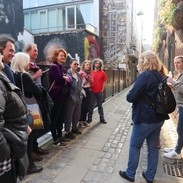Actions to take when dealing with flooding – a summary
RBG Kew/Jeff Eden

Actions to take
Immediate
Assess your position;
Establish the facts;
Identify likely customer concerns;
Develop a Personal Flood Resilience Plan.
First steps
Liaise with your accredited Local Visitor Economy Partnership (LVEP);
Work with your LVEP to identify and support their plans and messages;
Identify useful partners;
Develop your own messages and share with staff, supporters and local businesses;
Contact customers directly;
Update your website, share messages through social media and undertake press activity.
Next steps
Review marketing activity;
Review your offer;
Continue communicating with customers;
Seek endorsements.
Assess your business position
Review your costs;
Seek financial support and advice;
Consider your current position and plan for the future.
Post-crisis
Update your website;
Thank customers for their support;
Review your marketing activity.







